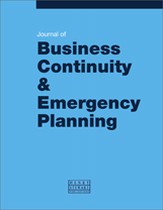Proven strategies for developing an emergency response community
Abstract
In any given year, the City of Boston is subject to a myriad of medical emergencies, many thousands of which affect the health and wellbeing of its citizens and visitors. Recently, for example, one of the city’s main pipes burst and flooded a hospital, there was a cement factory explosion over a school bus yard, a long-term care facility exposed over 60 residents to carbon monoxide poisoning, and two commuter ferry boats collided. The City prepares for such incidents, as well as disasters of a much greater scale. Interagency and inter-jurisdictional planning committees, training and exercises, and the utilisation of special events as planned disasters, all serve to enhance collaboration, coordination and preparedness across the medical and first-response community. In Metro Boston, the municipal and private public health and first-response agencies have taken comprehensive measures to institutionalise collaboration and partnerships. Written from the perspective of the Boston Emergency Medical Services, the city’s municipal 911 ambulance service, this paper describes the steps taken to build a more prepared community.
The full article is available to subscribers to the journal.
Author's Biography
Richard A. Serino began working for Boston Emergency Medical Services (EMS) in 1973, becoming Department Chief in 1999, as well as Assistant Director for the Boston Public Health Commission in 2007. He is a founding member of the National EMS Advisory Council; Chairman of the American Red Cross — Blood Services, Northeast Division Board of Directors; and Chair of the Metro Chiefs Division for the International Association of EMS Chiefs. He has been the Medical Incident Commander for over 35 mass casualty incidents and for all of Boston’s major planned events. He was recognised as the National EMS ‘Chief of the Year’ for 2007/08. He has lectured nationally and internationally on EMS and emergency preparedness issues and has written numerous articles and publications on emergency preparedness.
Laura N. Williams is the Deputy Chief of Staff at Boston Emergency Medical Services. She is a member of senior management and assists with various emergency preparedness and operational initiatives, including management of the Metro Boston Patient Tracking System, which has been recognised at the local, state and national level for its accomplishments in tracking runners during the Boston Marathon and individuals receiving vaccines at a Boston Public Health Commission influenza clinic. Laura has experience of working internationally, as well as responding to natural disasters; she managed a Hurricane Katrina response programme in 2004. Prior to her current position, she served as the Boston Metropolitan Medical Response System Program Coordinator. Laura has a master’s degree in public health from Boston University.
Citation
Serino, Richard A. and Williams, Laura N. (2009, February 1). Proven strategies for developing an emergency response community. In the Journal of Business Continuity & Emergency Planning, Volume 3, Issue 2. https://doi.org/10.69554/EWHB6865.Publications LLP
